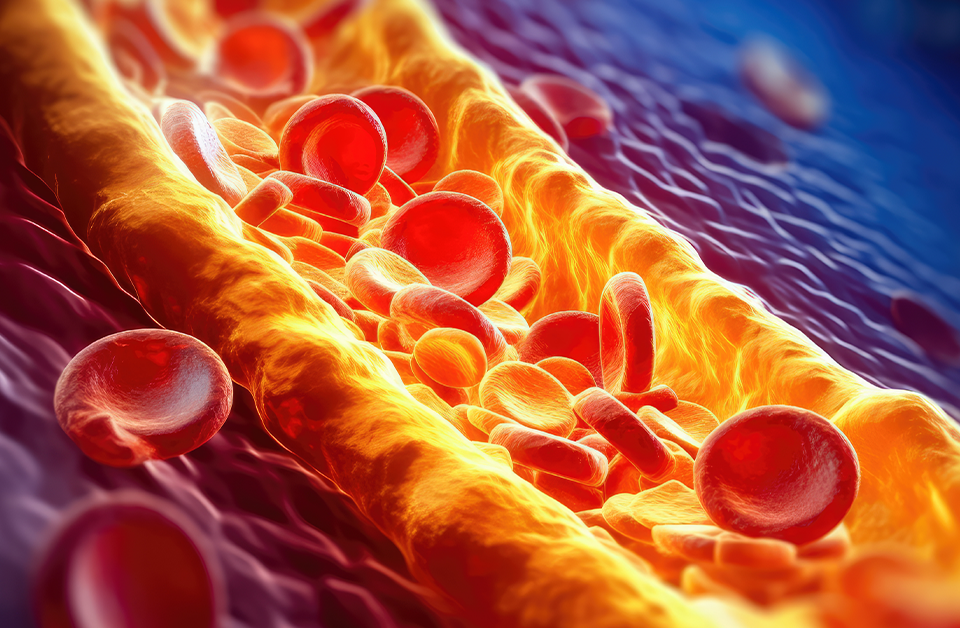
In 1978, Paul* was hanging high-rise steel when he got laid off from his job. A local Datsun dealership in his home state of Texas was hiring, so Paul visited the auto dealer to discuss possible employment.
“They said, You’ve got to start out as a porter, and in a month or so, we’ll talk about putting you in sales,” Paul remembers. “I washed cars for about a month and then the boss called me into the office and said, If you’ve got a shirt and tie, you can start selling Datsuns tomorrow.
“Shortly thereafter, I bought a Toyota Cressida station wagon and decided I wanted to sell Toyotas instead, which is what I did. I’ve been with Toyota for 44 years, the last 15 selling and financing Toyotas for a dealership in Holiday.”
Paul, 74, is extremely committed to his career. He’s also committed to his health. He runs two miles a day six days a week. However, one morning in April while running he experienced severe discomfort that caught him off guard and greatly concerned him.
“I was coming back from a run when all of a sudden I felt this pain right in the middle of my chest. It literally brought my motion to a stop,” Paul describes. “The only thing I could think of was, Lord, don’t let me die out here on the highway. I managed to shuffle my way back home and sat on the couch, and the pain went away. But I said to myself, That was not indigestion. It was entirely too severe. That’s a problem.”
And the problem got worse.
“Even though I run nearly every day and walk 10,000 to 15,000 steps a day over and above my run, my condition got to the point where I had to stop as I walked across the showroom floor, catch my breath and get it together,” Paul reports. “I had a significant loss of energy, which I knew wasn’t normal.
“I Googled heart doctors in my area, and Dr. Mathews had the best reviews of anybody, so I made an appointment.”
Thomas Mathews, MD, FACC, is a fellowship-trained interventional cardiologist at St. Luke Heart Institute in Brooksville, which provides all aspects of cardiovascular care and also treats venous disease, erectile dysfunction and stroke.
The doctor ordered an electrocardiogram, a treadmill test and other tests.
Paul recalls the bad news learned from the results.
“Dr. Mathews told me, You have a 90 percent blockage in your right leg, a 70 percent blockage in your left leg, and I’m certain there are blockages in your heart. It turned out I had a 90 percent blockage in my coronary arteries,” Paul lamented.
Advanced Technologies
“Paul initially presented to us with heart disease,” Dr. Mathews reports. “The coronary arteries that supply his heart were blocked by plaque buildup, a condition called atherosclerosis. We opened up the heart blockages using angioplasty and stenting. After that, we examined his abdominal aorta and leg arteries, and those blood vessels were also blocked.”
If left untreated, poor circulation and blockages in the legs can lead to severe consequences.
“If a leg fails to receive sufficient oxygen from blood due to blockages, a condition called critical limb ischemia may develop, and the patient can lose a toe or even an entire leg to amputation,” Dr. Mathews warns. “That is extremely serious because 50 percent of people who undergo amputations die within two to three years. That’s significant mortality.”
Dr. Mathews offers advanced technologies and interventional procedures to eliminate blockages in the leg arteries, restore healthy blood flow and prevent amputation. Among the treatments is rotoablation, also called rotational atherectomy, which works like a plumber’s drain snake to carve through the blockage. Another is balloon angioplasty, during which a balloon is inserted through a catheter and inflated to open up the narrowed artery.
The procedure Dr. Mathews chose for Paul was laser angioplasty.
“During laser angioplasty, we insert a small catheter through an IV in the groin and thread it through the circulatory system to the blockage,” the doctor explains. “First, we create images of the plaque with a camera inserted into the catheter. The technique is called intravascular ultrasound. We then use a laser to vaporize the blockage in the blood vessel.
“The laser breaks up the plaque into very minute particles, about the size of blood cells. Those tiny particles travel through the bloodstream to the liver, which processes and ultimately eliminates them from the body.”
Dr. Mathews performed laser angioplasty on the blocked arteries in both of Paul’s legs. The procedures have benefited Paul in a number of ways.
“Paul started walking the day after the procedure,” the doctor reports. “The last time I saw him, he was walking a couple miles a day. People need their legs to exercise and restore their heart health. The procedure helps the entire body. Once we fixed Paul’s legs, he could exercise and do his activities, so he has a happier and healthier lifestyle.
“The treatment decreases the risk for heart attack and death as well. People live longer after this procedure because it improves their overall health.”
Another complication of plaque buildup in the blood vessels is erectile dysfunction, which is a common symptom of atherosclerosis. Because they are blocked, the heart and blood vessels cannot pump blood to the male sex organs, so they cannot function properly.
“Once we opened up the blood vessels in Paul’s heart and legs, blood flow through the arteries that feed his sex organs also improved,” Dr. Mathews notes. “Paul has had a very healthy sex life since his procedures.”
“Absolutely No Pain”
Before the laser angioplasty, Paul experienced aching pain in his lower calves, particularly when he walked.
“The pain was routinely a 7½ to eight on a scale of one to 10,” Paul shares. “I’d reach down and try to massage my calves, and they’d be sore to the touch. I told myself it was from my run; I was pushing too hard.
“But immediately after the laser procedure, while I was in the recovery room, the pain was gone. And the following day, I was back to normal, walking briskly with no impediment. I have absolutely no pain whatsoever. None, zippo, nada!
“Dr. Mathews said it was because the blood flow was restored in my legs and heart. It made all the difference to me to see results so quickly.”
Paul is highly impressed with the interventional cardiologist and his staff.
“Dr. Mathews is wonderful. He has a calm, clear way of communicating so I understood every word,” Paul raves. “He took time to listen to me, and I enjoyed his bedside manner.
“The office personnel are to be complimented as much as Dr. Mathews. They kept me up with all my appointments and scheduled tests. They were really fantastic. I highly recommend Dr. Mathews and St. Luke Heart Institute.”
*Patient’s name changed at his request.








